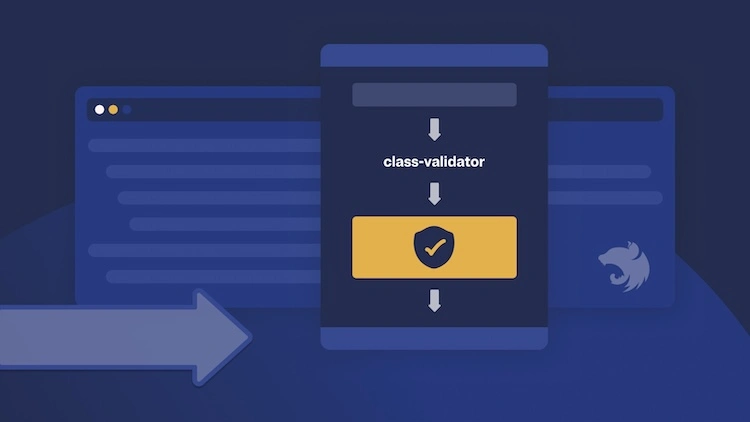What is micro copywriting?
The term “micro copy”, or “micro copywriting”, is refers to the small bits of text that guide users through an interaction with a digital product. These are the words, phrases, or sentences that are integrated within a product’s user interface and are directly related to the actions the user is expected to take when using the product. Micro copy can be found everywhere in a digital product’s interface, from button labels, success and error messages, to onboarding and newsletter subscription prompts, placeholders, empty states, and more. It plays a critical role in providing a seamless and intuitive user experience, offering direction and context to users, and helping to navigate and interact with the product more effectively.
Why is micro copywriting important?
Micro copy serves as a direct communication line between a digital product and its users. It anticipates potential questions that users may have and addresses them through short and useful sentences. These sentences are placed in sections where they are most needed, and at the precise moment when they are most relevant. The placement of micro copy ensures that the product is constantly engaging with its users, creating a two-way conversation that enables trust and familiarity.
The use of micro copy doesn’t just enhance the usability of the product – it also contributes to the overall branding strategy. By incorporating a unique voice and tone in the micro copy, the product, and by extension, the brand, is able to express its distinct personality. This serves to set it apart from the competition, making it more memorable and appealing to users, as well as allowing it to more effectively reach its target audience. By ensuring that the language, tone, and content of the micro copy resonate with the intended audience, the product can create a more engaging and satisfying user experience. This can lead to increased user retention, brand loyalty, and overall success for the product and the brand.
Micro copy as a communication tool
Because micro copy is a direct connection and line of communication between a product and its users, it can be seen as a conversation between the two. The purpose of the conversation is to enable both the users and the product to accomplish their goals and obtain a certain value from the interaction. Micro copy – and in extension – the entirety of product content (copy) should leave the impression of a conversation between the product and the user. That is why it is beneficial to include members of your target audience in the early stages of the design process and gain an insight into their habits, needs, goals – and most importantly – how they communicate them. This will help guide your design process when developing your product personality, voice, and tone.
Product (or brand) personality, voice, and tone, have more impact on user experience than it might seem. People (users) tend to attribute human traits even to inanimate objects, which means it is crucial to establish and present your brand personality, instead of leaving it to the user to decipher and create based on their own assumptions. Without clear presentation, users are prone to misinterpreting your product’s personality or overlooking the details that make your product personality unique and differentiate you from your competitors.
To develop a strong product personality, consider the values that define your product and are important to you, in addition to the needs and values of your target audience. These considerations will shape the voice and tone of your product. Before writing content, including micro copy, ensure that your product (brand) personality is well-defined. This will enable you to address various user scenarios, ranging from page loading times and registration forms to action-driving buttons and success or error messages.
Conversational writing
People often perceive interactions with digital products in the same way they do human-to-human interactions. This suggests that products should communicate in a more “human” manner. There are two main styles of communication - written and conversational. With the rise of emails and instant messaging, these two styles began to blend, leading to a new style that combines elements from both - conversational writing. This style implies written communication with a conversational tone.
As digital products serve as intermediaries in human communication or replace human interaction entirely, the micro copy for your product must adhere to certain societal norms of conversation. These include providing the right amount of information at the right time, being transparent and honest, giving sufficient context, and ensuring conciseness and precision.
Examples of micro copywriting
Elements that we can place under the “micro copywriting” label are registration and log in forms, newsletter subscription forms, contact forms/pages, error messages/states, empty states, placeholders, buttons, 404 errors, and loading times. Below we will examine the application of micro copywriting on several different elements.
Newsletter subscription forms
Newsletters are a convenient way for a brand or product to reach its target audience and build an ongoing relationship. Through newsletters you can send news, updates, and promotional materials to your user base. However, getting users to sign up to your newsletter is often difficult. Users might consider newsletters as annoying or useless, and it is up to you to convince them otherwise and present them the value and benefits they will get if they subscribe. In other words, if you are concerned that users will refrain from signing up to your newsletter because they think you will spam them, you can address that by clearly stating the frequency of your newsletter, or show that you are aware of your users’ concerns and assure them your newsletter will not spam them – like we did on our CoreEvent website.

Contact page
Your digital product serves as a virtual representative of your brand. Viewed from this perspective, your contact pages act as customer support, providing a space for users to reach out if they need assistance. It’s essential that your contact page makes users feel welcome and comfortable in contacting you with their queries.
Micro copy on our CoreEvent contact page briefly explains the main purpose of it (”…questions about tickets, organizing events…”), but also takes the edge off and communicates our brand personality through a more casual approach at the end of the sentence (”…just want to have a chat.”).

Buttons
Buttons are interactive elements that allow users to achieve their goals while using your product. They translate user decisions into actions. Through buttons, users communicate with the product and make the necessary requests to complete their desired actions, ultimately achieving their goals. When writing button microcopy, avoid generic phrases such as “Download”, “Send”, “Buy”, etc. Instead, focus on defining the value users will receive by clicking the button. Also, provide context about what will happen when the button is clicked (or tapped).
In an example from (again) our CoreEvent website, the button for buying tickets clearly communicates what will happen when you press it.

Conclusion
Writing micro copy, although seemingly insignificant, greatly impacts your product’s overall user experience. It guides users, anticipates their questions and concerns, prompts them towards necessary actions, and differentiates your brand from competitors. It can even delight users unexpectedly.
However, moderation is key in writing micro copy. While it can be used to express personality and charm, it’s not always necessary. It’s crucial to align the tone with your line of work, target audience, and their communication style. Sometimes, simply providing guidance and direction is sufficient.



